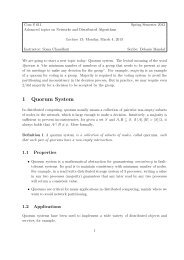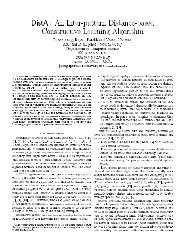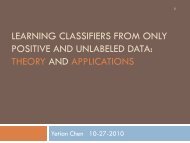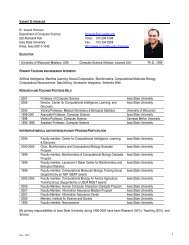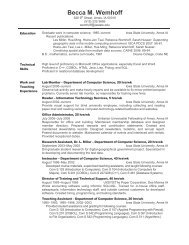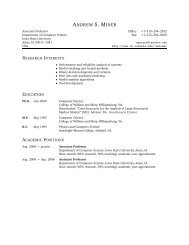Quaternions and Rotations∗ - Iowa State University
Quaternions and Rotations∗ - Iowa State University
Quaternions and Rotations∗ - Iowa State University
Create successful ePaper yourself
Turn your PDF publications into a flip-book with our unique Google optimized e-Paper software.
the modern theory of relativity. In signal processing, Quaternion Fourier Transform (QFT) is a<br />
powerful tool. The QFT restores the lost commutative property at the cost of no longer being a<br />
division algebra. It can be used, for instance, to embed a watermark in a color image. Other applications<br />
of QFT include face recognition (jointly with Quaternion Wavelet Transform) <strong>and</strong> voice<br />
recognition [6].<br />
7 <strong>Quaternions</strong> vs Homogeneous Coordinates<br />
Homogeneous coordinates are introduced to make translation multiplicative, along with scaling<br />
<strong>and</strong> rotation. They are convenient in representing points, lines, <strong>and</strong> planes, <strong>and</strong> fundamental for<br />
studying projections. Like quaternions, homogeneous coordinates are 4-tuples. This suggests that<br />
there might be a way of doing scaling <strong>and</strong> translation using some sort of quaternion operator. As<br />
of now, no such way has been found as quaternions <strong>and</strong> their rotation operators are algebraically<br />
incompatible with homogeneous coordinates.<br />
References<br />
[1] P. J. Besl <strong>and</strong> N. D. McKay. A method for registration of 3-D shapes. IEEE Transactions on<br />
pattern analysis <strong>and</strong> machine intelligence, 14(2):239–256, 1992.<br />
[2] O. D. Faugeras <strong>and</strong> M. Hebert. The representation, recognition, <strong>and</strong> locating of 3-D objects.<br />
International Journal of Robotics Research, 5(3):27–52, 1986.<br />
[3] B. K. P. Horn. Closed-form solution of absolute orientation using unit quaternions. Journal of<br />
Optical Society of America A, 4(4):629–642, 1987.<br />
[4] T. W. Hungerford. Algebra. Springer-Verlag, 1974.<br />
[5] N. Jacobson. Basic Algebra. W. H. Freeman & Co.,1985.<br />
[6] S. Oldenburger. Applications of <strong>Quaternions</strong>. Written project of the course “Problem Solving<br />
Techniques in Applied Computer Science” (Com S 477/577), Department of Computer Science,<br />
<strong>Iowa</strong> <strong>State</strong> <strong>University</strong>, 2005.<br />
[7] J. B. Kuipers. <strong>Quaternions</strong> <strong>and</strong> Rotation Sequences. Princeton <strong>University</strong> Press, 1999.<br />
[8] J. T. Schwartz <strong>and</strong> M. Sharir. Identification of partially obscured objects in two <strong>and</strong> three<br />
dimensions by matching noisy characteristic curves. International Journal of Robotics Research,<br />
6(2):29–44, 1987.<br />
12



